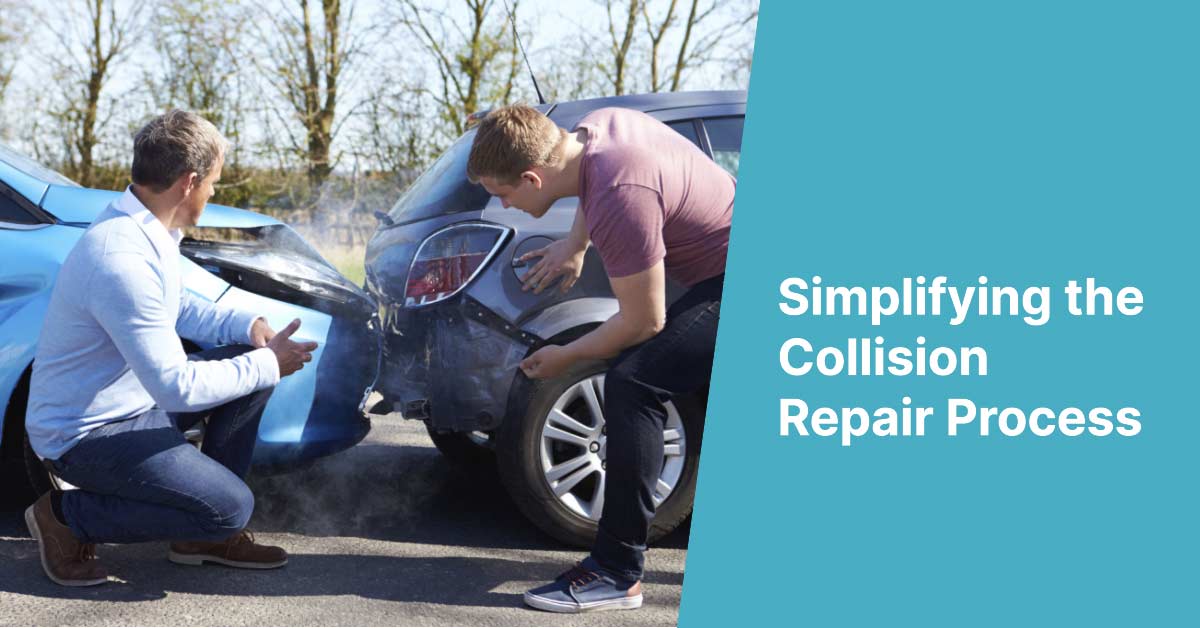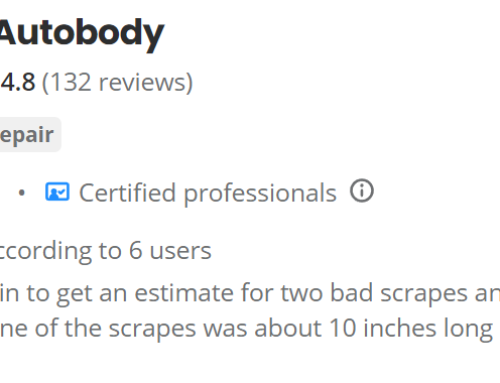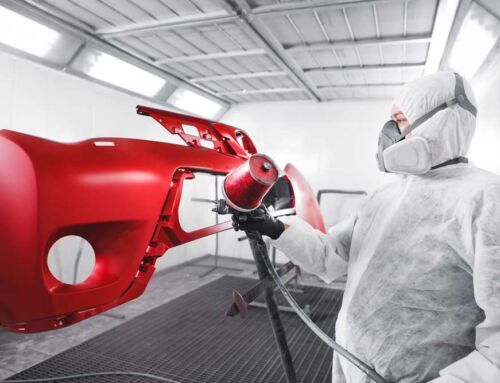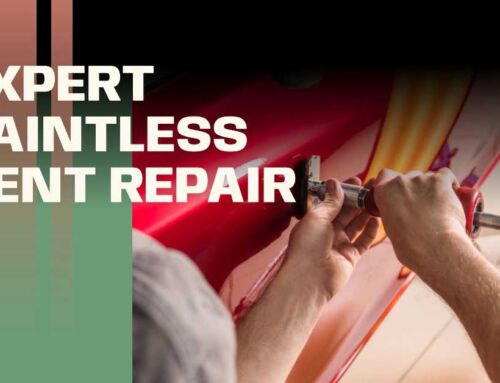Understanding Fender Benders
Fender benders are minor car collisions where both vehicles typically remain operable, and usually, no one is injured. The damage is often limited to the fenders or metal panels surrounding the tires, hence the name Fender Bender. Despite their seemingly minor nature, even small dents can result in hundreds of dollars in repair costs.
Many fender benders occur in parking lots, at intersections, or during other low-speed driving scenarios, as explained by Dennis + King Law. These incidents typically cause little to no damage to the vehicles involved, and the severity of the collision is usually low.
However, it is essential to be aware of potential issues that might arise from a fender bender. For example, rust may develop from scratches and dents if they are not properly addressed. Such damage has the potential to significantly impact the vehicle’s value and performance over time.
The repair process following a fender bender generally involves a thorough assessment of the damage by a qualified technician. This technician will identify necessary repairs and provide an estimate for the cost. Once repairs are agreed upon, the vehicle undergoes the repair process, which often involves replacing damaged parts, fixing dents, and repainting affected areas.
Ultimately, knowing how to handle a fender bender and identifying potential issues that can arise from such a collision is crucial for maintaining your vehicle’s value and ensuring its safe operation on the road.
Assessing the Damage
Initial Evaluation
During the initial evaluation, a collision repair specialist examines the vehicle to identify the extent of the damage caused by the fender bender. This process includes a thorough inspection of both exterior and interior damages, such as dents, scratches, or damages to the vehicle’s safety systems. The specialist also checks for any potential issues with the car’s alignment, suspension, or structural integrity. This initial evaluation is essential for ensuring that the repair process addresses all damages and restores the vehicle to its pre-accident condition.
Detailing Damages
After the initial evaluation, the specialist carefully details all identified damages, documenting them in a comprehensive report. This step includes taking detailed notes and high-quality photographs of the affected areas, as shown by FenderBender. These records serve as a valuable reference during the repair process and may be necessary for insurance claims or legal purposes.
Here are some key detailing practices:
- Clear photos: Capture high-resolution images of each damage from multiple angles.
- Labeling: Assign labels to various damages to provide easy cross-referencing with the repair report.
- Notes: Include written descriptions of the damages, specifying their location and severity.
Estimating Costs
Once the damages have been detailed, the collision repair specialist assesses the necessary repair procedures and estimates the associated costs. This process involves consulting OEM procedures to determine the recommended repair techniques and parts needed to restore the vehicle to its original condition. The specialist also takes into account labor costs, materials required, and any additional services, such as paint matching or alignment adjustments.
To provide a transparent and reliable estimate, the specialist may:
- Itemize costs: List each repair procedure, part, and service with its corresponding cost.
- Include timeframes: Estimate the expected duration for each repair step.
- Offer explanations: Provide a brief explanation for each included repair procedure or part, clarifying its necessity in the overall repair process.
By conducting a thorough assessment of the damage, collision repair specialists can ensure that the vehicle is fully restored to its pre-accident state, ensuring the safety and satisfaction of their customers.
Choosing Collision Repair Services
Selecting a Repair Shop
When you need to fix a fender bender, it’s essential to choose a reputable collision repair shop. Start by asking for recommendations from friends, family, or your insurance company. Research different shops to assess their professionalism and expertise. Some factors to consider include the shop’s facilities, reviews, and the training of their technicians. For example, Downtown Auto Body in Rohnert Park, CA offers state-of-the-art facilities and highly trained professionals.
When visiting potential repair shops, pay attention to their cleanliness and organization. A well-maintained shop with modern technology suggests a higher level of professionalism and dedication to quality work.
Comparing Quotes
Once you have selected a few potential repair shops, it’s time to compare quotes. Request estimates from each shop, detailing the extent of the damage and the necessary repairs. Make sure the quotes outline the materials and labor costs to help you make an informed decision.
Take your time and evaluate each estimate critically. Remember, the cheapest quote may not always be the best choice. Instead, focus on finding a repair shop that provides a balance of quality work and reasonable prices. Discuss any concerns with the shop representatives or technicians and ensure clear communication during the repair process.
Using these guidelines will help you make an informed decision when choosing collision repair services for your fender bender.
Repair Process
Disassembling the Damaged Area
The first step in the collision repair process is to disassemble the damaged area. This involves removing any damaged parts such as the bumper, fender, or hood. It’s crucial to inspect all underlying components for further damage that may not be visible initially. By doing so, technicians can ensure a more accurate estimate and plan for the necessary repairs.
Structural Repairs
After disassembling and carefully inspecting the damaged area, technicians can move on to structural repairs. These repairs often include straightening the vehicle’s frame if it has been compromised in the collision. They use advanced tools and equipment to measure the frame and restore it to its original specifications. This step is vital to ensuring the vehicle’s safety and performance after repair.
Cosmetic Repairs
Once the structural repairs are completed, technicians can focus on cosmetic repairs. This step entails repairing or replacing damaged body panels, trim, and other external components that were affected during the collision. These parts may need to be welded, bonded, or bolted onto the vehicle. Auto body technicians take great care to ensure proper alignment and fitment during this stage, which is critical in maintaining the car’s appearance and aerodynamics.
Painting and Finishing
The final step in the repair process is painting and finishing. First, technicians will carefully prepare the repaired areas by sanding and applying a primer coat. The primer helps the paint to adhere correctly and provides a smooth, uniform surface for the paint to be applied. Next, the appropriate color and clear coat will be applied to match the vehicle’s original finish. After the paint has dried and cured, technicians will perform any necessary polishing and detailing to ensure the repaired area looks like new.
The Fender Bender repair process is designed to provide a thorough, high-quality repair that restores a vehicle’s appearance, performance, and safety. By following these steps, collision repair technicians help to ensure a satisfactory outcome for every customer.
Post-Repair Steps
After a fender bender, various repair processes are carried out to restore the car to its original condition. Once the repair is completed, there are essential post-repair steps to ensure the vehicle is safe and aesthetically pleasing.
First, the vehicle undergoes a thorough inspection to verify that the damage has been adequately addressed. This process may include a visual examination of the fender, checking for proper alignment, and ensuring that adjacent panels and parts fit seamlessly. The inspector also evaluates the quality of the paint job, confirming that the color matches the rest of the car and that there are no visible imperfections.
Next, the body shop performs a safety check to ensure that all repairs meet safety standards and requirements. This may involve testing the vehicle’s lights, brakes, suspension, and steering components to confirm everything functions as it should. Additionally, the car’s electronic systems may be inspected to make sure no errors or faults have occurred during the repair process.
After the safety check, a thorough cleaning and detailing of the vehicle takes place. This step restores the car’s appearance, removing any dust, dirt, or debris accumulated during the repair process. The exterior is washed, and the interior is vacuumed and wiped down, ensuring the car leaves the body shop looking pristine.
Lastly, once the vehicle has passed all inspections and detail work, the repair is considered complete. The body shop will provide the car owner with any necessary documentation, such as warranties or invoices, to confirm the work has been carried out. Before leaving the shop, it’s essential for the car owner to review the repairs and address any concerns with the technicians, ensuring complete satisfaction with the work performed.
In summary, following a fender bender repair, several post-repair steps are crucial to guarantee the vehicle’s safety, functionality, and appearance. These steps include inspection, safety checks, thorough cleaning, and a final review to ensure the car owner is satisfied with the repair outcome.
Frequently Asked Questions
When it comes to fender bender repairs, many vehicle owners have questions about the process. In this section, we address some of the common queries related to fender bender repairs.
What is a fender bender?
A fender bender is a minor collision involving the fender of a vehicle. These accidents typically occur at low speeds and often result in cosmetic damage, such as dents and scratches, rather than serious structural damage.
How do I assess the damage?
Before starting any repairs, it is essential to evaluate the extent of the damage on the fender. Determine if the fender can be repaired or needs to be replaced. Take note of any paint damage, dents, or creases that may require additional attention 1.
Can I fix the damage myself?
Depending on the extent of the damage, some fender benders can be fixed at home. For example, minor dents can be removed using hot and cold air from a heat gun or hairdryer and compressed air 2. However, more extensive repairs, such as paint damage or significant bending, may require professional help.
How important is it to follow OEM repair procedures?
Following OEM (Original Equipment Manufacturer) repair procedures is crucial to ensure that the repairs meet the manufacturer’s standards and maintain the vehicle’s safety and performance. A majority of repair shops (82%) follow OEM repair procedures for most repairs, while 16% do so sometimes and 2% don’t follow them at all 3.
What is the average time to fix a fender bender?
The repair time for a fender bender varies depending on the severity of the damage and the skill-level of the technician. Generally, a simple fender repair can take anywhere from a few hours to a couple of days. More extensive damage that includes paintwork or requires parts replacement may take longer.





